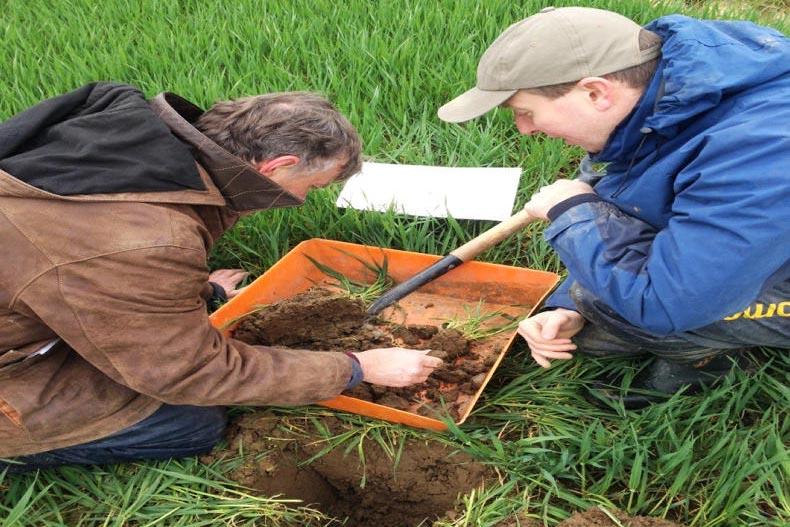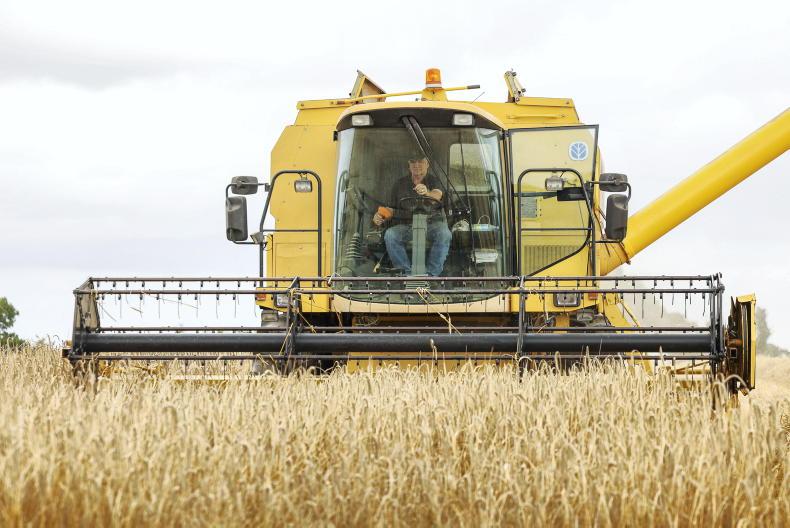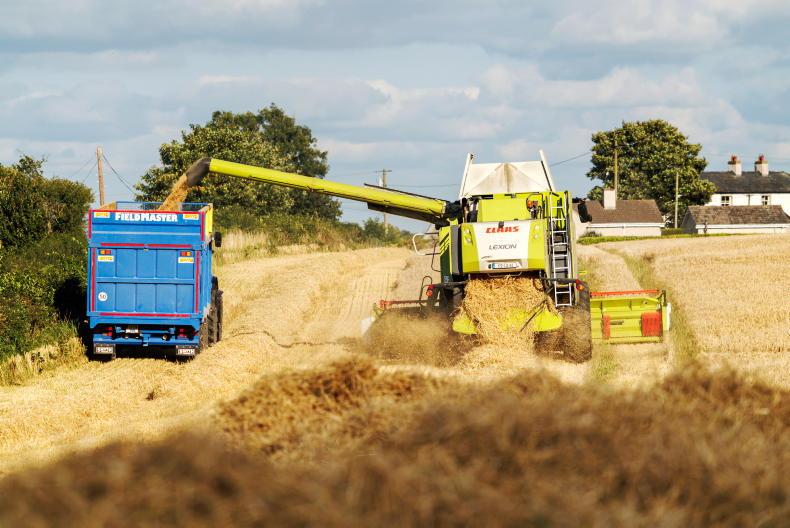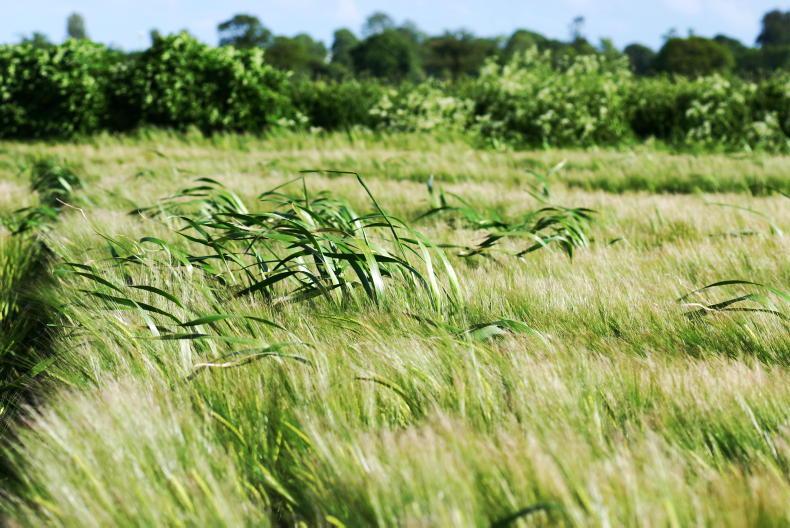Soil tests have been carried out on the BETTER farms and these have been used as the basis for fertiliser recommendations. However, where these samples have shown variations, soil digs have been carried by Teagasc’s Dermot Forristal and Mark Plunkett to try to establish if there are any issues such as compaction below the ground.
These digs can help to make recommendations on how to improve soil structure and health, which should in turn make the soils easier to work and for crops to grow in.
Plant counts have been carried out beside the digs to measure how the crops have established and tillered. Tiller numbers are generally on or above target, with barley ranging from 1,000 to 1,500 tillers per square metre and wheat from 600 to 900 per square metre. However, there were variations within crops, and areas with slightly less than ideal soil characteristics tended to have slightly lower tiller numbers.
Tissue samples have also been taken to see if there are any nutrient deficiencies in the plants. This can sometimes be diagnosed just by visual assessment. However, often it can be very difficult to diagnose a problem accurately without further analysis. Manganese deficiency has been found in one crop so far.
Kevin has taken delivery of his Crop Quest sensor, which he plans to use for the nitrogen applications on crops that need it most and reduce applications where crops are heavy and likely to lodge. The sensor should be able to reduce the risk of over-applying nitrogen to crops and therefore reduce the risk of lodging.
Kevin has applied liquid nitrogen on his winter crops this year as a trial. He noticed a response from the crops in approximately four days. This could be significantly longer with traditional fertilisers if conditions are dry in his area. The application is also more consistent according to Kevin, something that becomes more important as tramline widths increase.
All the spring drilling is completed at this stage, except for spring rape, which he hopes to complete by the weekend. This will all receive 3,000 gallons of pig slurry per acre.
Wheat has been examined to estimate when leaf three will be fully emerged, so that the T1 can be applied. Eamonn Lynch, John’s local adviser, examined a crop of winter wheat on 7 April which was sown on 11 October and found that the crop was at growth stage 31 with leaf three 25% emerged. The crop received poultry manure before planting and the crop has been more advanced than other wheat on the farm which received no manure. These advanced crops also had more tillers and, as a result, mildew in them.
John said the T1 was applied earlier this week. The crops with no poultry manure are probably a week behind and will be due the T1 next week when leaf three has fully emerged. Eamonn and John agree that each crop must be carefully examined this year for leaf three emergence, as they can see variations within their own crops.
Crops are progressing nicely. All the winter barley received its final nitrogen a few weeks ago and the crops are growing nicely.
The fungicides and growth regulators have been applied with just the heading spray, at awns emerging, left to be done. Crops are thick, with tiller numbers on average over 1,200 per square metre, so they should have good yield potential.
Wheat has received a T0, with rust being a problem in some varieties (eg Horatio). These received a morpholine and strobulurin to keep the rust at bay.
Derek says he will have to reconsider varieties that are rust-susceptible in future, as there is an added cost in disease control. Derek has also noticed variations in the growth stages in his wheat crops, with the early crops approximately a week ahead of the rest.
Spring wheat was drilled in March after potatoes and is now emerged. The crop received a base application of three bags per acre of 10:7:25 and Grolime incorporated into the seedbed. It’s important to give it the best start possible, according to Derek.










SHARING OPTIONS